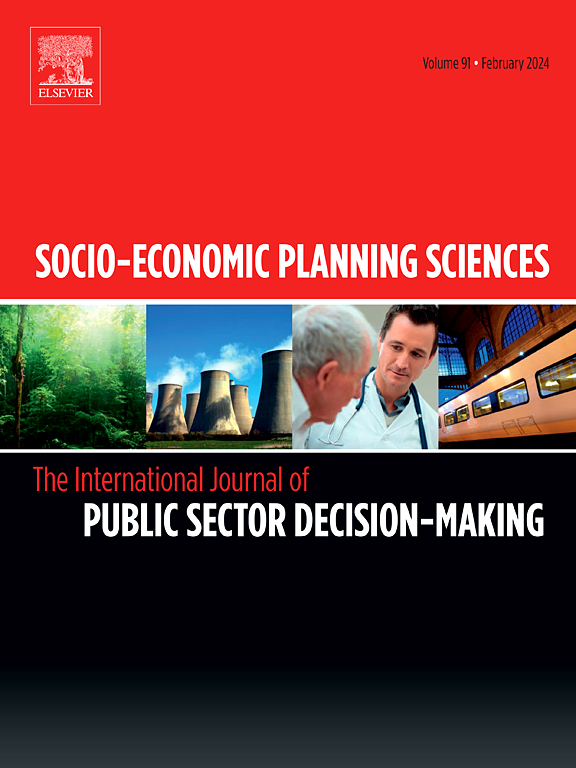Improving transit network resilience against disruptions through path redundancy
IF 5.4
2区 经济学
Q1 ECONOMICS
引用次数: 0
Abstract
Public transport systems are vulnerable to natural disasters, accidents, or deliberate attacks, that can cause infrastructure damage and service disruptions. Disruption impacts depend on the network structure and the availability of alternative travel paths, highlighting the importance of path redundancy in public transport network planning. Addressing the associated research gap, we propose a practice-oriented path redundancy indicator and integrate it within a novel hybrid metaheuristic solution framework to design more resilient route structures from scratch. The approach combines Reinforcement Learning, Local Search operators and Particle Swarm Optimization and is validated using an established benchmark from the literature and a real-world network from Uruguay, generating more resilient networks that serve up to 25 % and 40 % more passengers in random and targeted attacks, respectively. Results show that resilience against link failures can be enhanced through path redundancy without adversely impacting average travel times.
通过路径冗余提高交通网络的恢复能力
公共交通系统容易受到自然灾害、事故或蓄意攻击的影响,这可能导致基础设施受损和服务中断。交通中断的影响取决于交通网络的结构和可供选择的出行路径的可用性,这凸显了公共交通网络规划中路径冗余的重要性。为了解决相关的研究空白,我们提出了一个面向实践的路径冗余指标,并将其集成到一个新的混合元启发式解决方案框架中,以从头开始设计更具弹性的路径结构。该方法结合了强化学习、局部搜索算子和粒子群优化,并使用文献中的既定基准和乌拉圭的真实网络进行了验证,生成了更具弹性的网络,在随机攻击和目标攻击中分别为25%和40%的乘客提供服务。结果表明,对链路故障的弹性可以通过路径冗余增强,而不会对平均旅行时间产生不利影响。
本文章由计算机程序翻译,如有差异,请以英文原文为准。
求助全文
约1分钟内获得全文
求助全文
来源期刊

Socio-economic Planning Sciences
OPERATIONS RESEARCH & MANAGEMENT SCIENCE-
CiteScore
9.40
自引率
13.10%
发文量
294
审稿时长
58 days
期刊介绍:
Studies directed toward the more effective utilization of existing resources, e.g. mathematical programming models of health care delivery systems with relevance to more effective program design; systems analysis of fire outbreaks and its relevance to the location of fire stations; statistical analysis of the efficiency of a developing country economy or industry.
Studies relating to the interaction of various segments of society and technology, e.g. the effects of government health policies on the utilization and design of hospital facilities; the relationship between housing density and the demands on public transportation or other service facilities: patterns and implications of urban development and air or water pollution.
Studies devoted to the anticipations of and response to future needs for social, health and other human services, e.g. the relationship between industrial growth and the development of educational resources in affected areas; investigation of future demands for material and child health resources in a developing country; design of effective recycling in an urban setting.
 求助内容:
求助内容: 应助结果提醒方式:
应助结果提醒方式:


